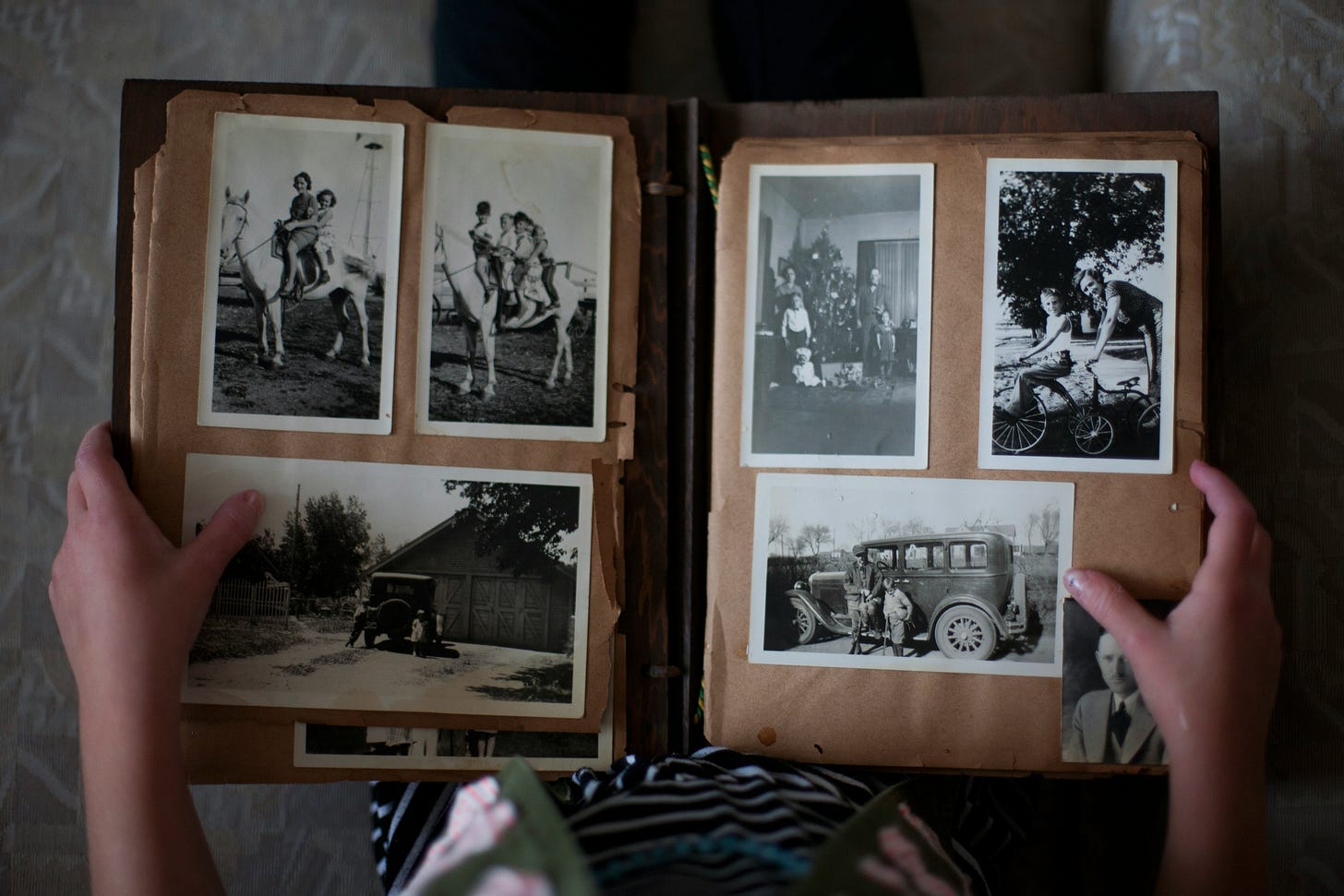Remembering to Believe: How Collective Remembering Shapes Faith Formation
If we wish to see faith passed on, we must commit to the rhythms of remembering—telling and retelling the great story of God’s redemptive work.
I have spent the last few weeks trying to write up a chapter for a presentation I gave at the Children’s Spirituality Summit in Chicago last year. While it has taken a while to wrangle all the dispersed PowerPoint slides and index cards that I used for the presentation back into a coherent whole, I have enjoyed returning to the topic of collaborative memory and the formation of the autobiographical self as an interpretive lens through which to understand childhood faith formation in the intergenerational church.
While the complete chapter will be ~4500 words and won’t be published until at least next year, I have summarised the main idea in this taster article.
I intend to present some further research down this same rabbit hole at this year’s InterGenerate Conference at Asbury Theological Seminary in June. If you would like to help sponsor this research and help me get to Kentucky, then please consider becoming a paid subscriber to this SubStack, or giving a one-off donation at this GoFundMe link.

“Did God use to come here?”
Six-year-old Katie asked her Sunday School teacher this question over morning tea at a small suburban church south of Sydney. When prompted for why she thought that, her answer was striking: “Everyone here seems to know him, and I’ve heard he’s coming back, but I don’t think I’ve ever met him.”
Katie’s childlike faith reveals something profound: she had absorbed the narratives of her church community so deeply that she assumed their experiences of God were literal, local, and immediate. This moment offers a lens through which to examine how faith is transmitted across generations—through shared stories, collaborative memory, and the shaping of identity within a faith community.
Understanding Social Memory
Sociologists and anthropologists recognise the role of memory in shaping identity within groups—whether families, clubs, or entire cultures. This concept, known as collective memory, is a body of shared stories and events central to a group’s identity. Such memories shape how a group sees itself and reinforce its beliefs and values.
For instance, nations preserve their character through the retelling of historical events—America’s Revolutionary War fosters a spirit of independence, while Australia’s ANZAC Day commemorates perseverance and mateship. Memory and identity are intertwined; as one scholar puts it, “individuals and groups remember as part of a culture with shared goals and an understood structure for remembering culturally important events.”1
Collaborative memory is the process through which these stories are actively shared and reconstructed. It solidifies group identity and embeds individuals into the community. In the home, parents engage in this process when they tell children stories about their past: “Remember when we fed the ducks at the park?” or “Grandma was in the Air Force. Do you know why she marched in the parade?” These shared memories form a child’s sense of self and place within a broader history.

Another key concept is vicarious memory—memories passed down to those who did not personally experience them. A child may have no memory of their parents’ wedding day, but through repeated storytelling, it becomes part of their understanding of family history. On a national level, younger generations only know events like 9/11 or the fall of the Berlin Wall through vicarious memory, yet these moments still shape their awareness and understanding of the world.
The Role of Social Memory in Faith Formation
The faith community operates similarly. The Bible itself models the practice of passing down collective memory:
Exodus 12:26-27: “And when your children ask you, “What does this ceremony mean to you?” then tell them, “It is the Passover sacrifice to the Lord…’”
Deuteronomy 6:5-9: “Impress [these commandments] on your children. Talk about them when you sit at home and when you walk along the road…”
Psalm 78:3-4: “We will tell the next generation the praiseworthy deeds of the Lord.”
Matthew 28:19-20: “Go and make disciples of all nations… teaching them to obey everything I have commanded you.”
Faith is transmitted when older generations share the narratives of Scripture and their lived experiences of God with younger generations. The collective memory of the Christian faith—rooted in Scripture, church history, and personal testimonies—is shared through collaborative remembering.
Katie’s question about God’s presence in her church was shaped by the stories she had heard from adults around her. The church’s conviction that Jesus is real, alive, and present in their lives became so embedded in her understanding that she assumed he had once physically been there. This illustrates how faith communities can cultivate belief through shared narratives.
Practical Steps for Homes and Churches
If faith is best transmitted through collective memory, then Christian communities and families must be intentional about collaborative remembering. Here are four key practices:
1. Confidence in Collective Memory
To pass down faith effectively, church leaders, parents, and mentors must be well-versed in Scripture and Christian history. Biblical literacy strengthens one’s ability to “tell the next generation the wonders God has done” (Psalm 78:4). Investing in personal theological growth is not only for individual edification but for equipping the next generation.
2. Local Collective Memory
While all Christians share a common faith, each local church has its own unique history and identity. Telling stories of a congregation’s beginnings, past struggles, and moments of God’s faithfulness helps shape members’ own sense of belonging. These narratives reinforce the lived experience of faith within a specific community.
3. Collaborators in Memory
Faith transmission is a collaborative process in which children actively participate. As they listen, question, and retell the faith stories they hear, they become partners in remembering. The entire congregation—elders, pastors, Sunday School teachers, and mentors—plays a role in shaping this process by sharing their experiences of God. Through testimonies, communal worship, and intergenerational relationships, children engage with these narratives and begin weaving them into their own developing faith identity.
4. Daily Rhythms of Remembering
Just as Deuteronomy 6 calls for faith to be woven into everyday life, Christian households should cultivate warm, relational spaces where collaborative remembering can flourish. Engaging in Bible reading, prayer, or storytelling within affectionate, trusting relationships strengthens a child’s ability to participate in the shared memory of faith. Simple moments, like recalling answered prayers at the dinner table or retelling family testimonies, provide a nurturing context for faith formation.

Conclusion: The Spirit Works Through Memory
Ultimately, faith formation is the Spirit’s work. Yet, as social memory research affirms, the communal retelling of God’s mighty acts provides the environment in which faith is nurtured. Just as Katie absorbed the reality of God through her church’s collective memory, so too can future generations come to faith through the intentional storytelling of the Christian community. If we wish to see faith passed on, we must commit to the rhythms of remembering—telling and retelling the great story of God’s redemptive work.
Michelle L. Meade, Celia B. Harris, Penny Van Bergen, John Sutton, and Amanda J. Barnier. Collaborative Remembering: Theories, Research, and Applications. Oxford, UK: Oxford University Press, 2018. p.8
Keep reading with a 7-day free trial
Subscribe to The Child in God's Church Substack to keep reading this post and get 7 days of free access to the full post archives.



